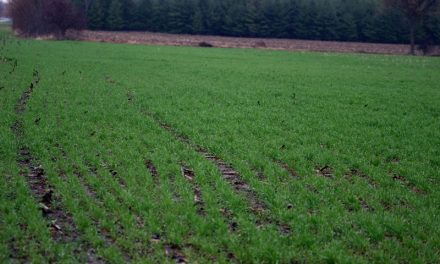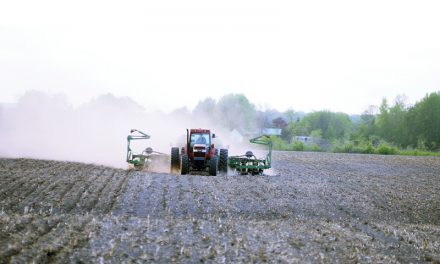By Colleen Acres
AgriNews Contributor
I often get asked what are some of the reasons that sheep farmers exit the industry so quickly. Besides market fluctuations and the realization that profitability is not as easy as some might think – I believe the two main reasons are parasites and predators.
As we head into the fall season and coyotes have trained their pups and pasture grasses are starting to be depleted, these are typically some of the most challenging months for pastured sheep flocks.
Pasturing can greatly reduce feed costs, but it can also expose sheep and lambs to predators and to parasites. These factors need to be managed to ensure the health of the flock and to keep the farm operating efficiently and effectively.
Some strategies that can help to limit losses due to predation are locking sheep into a barnyard at night, using lights and noise (eg. radio) to discourage predation, electric net fencing, guardian animals or a combination of all these strategies. What can work for one producer might not work for another, or what works for a period might suddenly no longer work. We have found that after we have experienced an “event,” changing up something will sometimes help, at least for a period. But to do nothing will invite further challenges.
Checking stock every day and managing deadstock are essential. Livestock guardians work for some but not all producers, and often take a period to adjust to the expectations of their owner and their environment. No two guardians work the same way so their needs to be a trial period. Dogs, donkeys and llamas can all be effective guardian animals. Remember there is a cost associated with predation managements – guardian animals can be expensive in terms of veterinary care, feed, hoof maintenance, shearing cost, etc. depending on the species you choose.
Do your research and figure out if they can be a fit for your operation or if you can simply rely on good fencing and other management strategies to reduce risk.
Another equally challenging issue for sheep is parasites, particularly barber pole or haemonchus. These are internal parasites of sheep and lambs that are not visible unless regular fecal samples are taken. Strategies to reduce worm burden should be the goal rather than relying on treatment options. We are fortunate to have several treatment options to use in sheep if parasites have taken hold.
The parasites can kill sheep and lambs quickly before producers even realize they have a problem. Some visual telltale signs are evident but by the time they are visible it can sometimes be too late and will cost much more in terms of treating and reduced growth, so management is the preferred option.
Visible signs can consist of dirty hind ends due to loose stool. Bottle jaw or swollen mouth and throat in sheep indicate heavy worm burden. Also, because haemonchus are blood sucking parasites, their hosts can become very anemic. This is evident in eyelids and gums becoming pale white instead of a healthy pink colour. Loss of body condition score is another sign of parasites. Any of these symptoms indicate a need for immediate treatment with a dewormer and sometimes an iron supplement to rebuild lost blood and energy levels can help turn severely anemic sheep and lambs around. If dewormers are required, oral dosing is best (not pour on as with cattle) and preferably not injectables as these are slower releasing and can lead to more resistance issues.
Work with your vet to determine the best product to use and ensure proper dosing as well as follow up testing to ensure the product worked. Regular fecal sampling (whether it is individual animals who you might suspect are experiencing parasite issues or pooling samples from across the flock or from different management or age groups) is a great tool to help you manage parasites and to know if or when to treat based on raised levels.
Some vets can help teach you how to do your own testing with microscopes, etc. or will assist in sending away to a lab and interpreting the results for you.
The best pasture producers are practicing rotational grazing to limit exposure levels and leaving parasites to be shed on pasture and then moving animals every day or every couple of days to fresh grass where they will not ingest those parasites so they cannot multiply. Parasites require a management plan to reduce losses, reduce excessive costs and reduce producer frustration.
Parasites and predators are two main challenges for sheep and lamb producers. With some awareness and management, they can be overcome, allowing producers to be profitable while pasture raising their sheep flocks. Happy shepherding!













